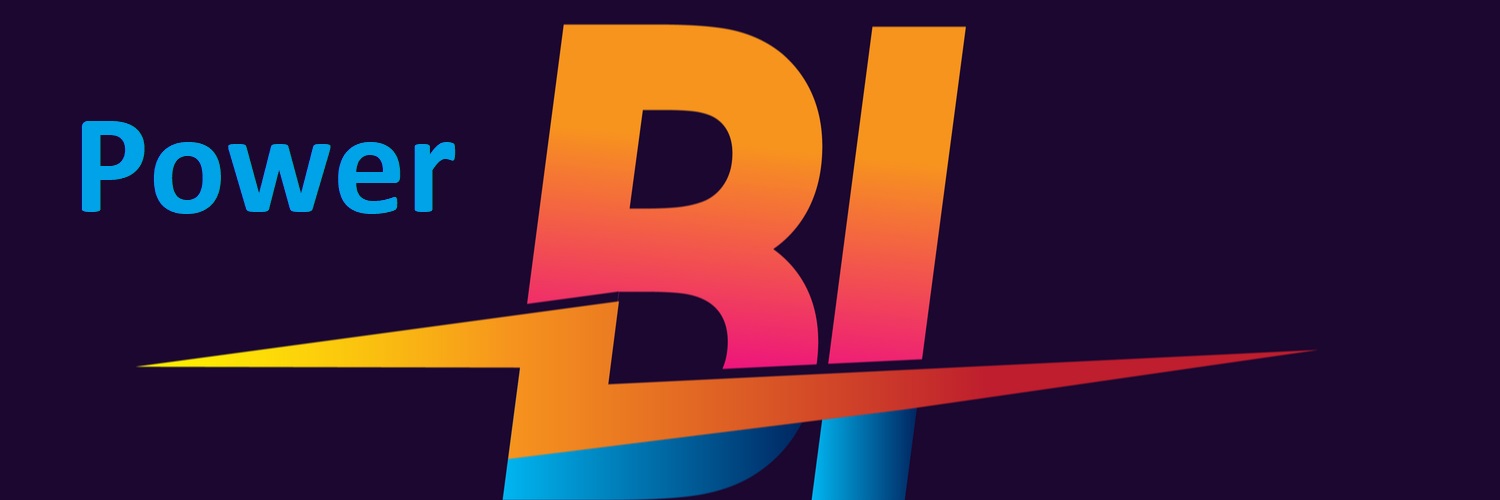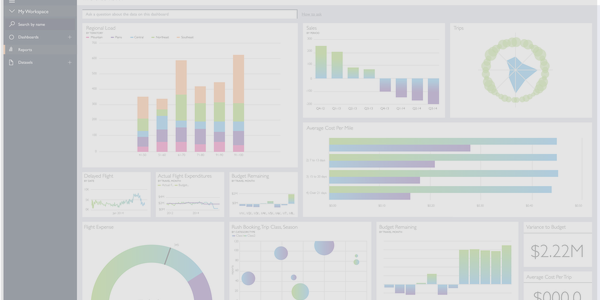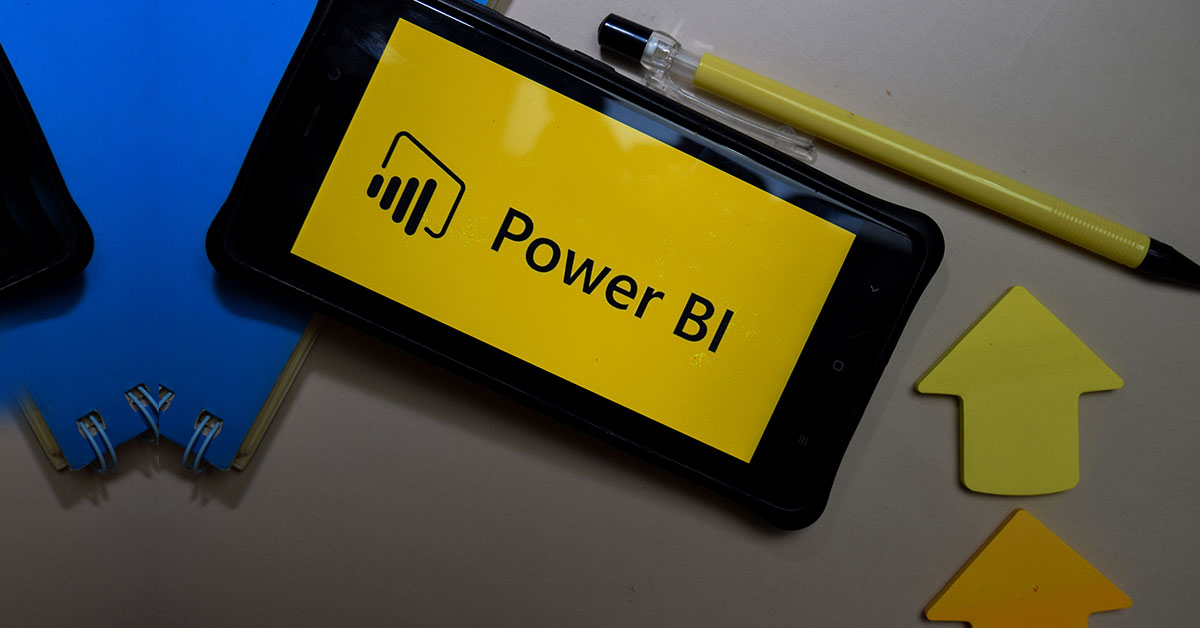For enterprises to run operations smoothly while keeping an eye on future business opportunities, data management is the key. It’s critical for businesses to leverage the power of data and use relevant information smartly for getting new perspectives, valuable suggestions, and actionable insights. For this, organizations use purpose-built, smart digital applications such as data visualization tools and business intelligence solutions. And among the numerous business intelligence and data visualization applications in the market, Microsoft’s Power BI and Salesforce’s Tableau are the front-runners.
While Tableau and Power BI offer distinct functionalities and hence advantages to the users, many of their features also overlap and rival each other. This forces users to draw an advantage/disadvantage comparison every time while choosing the best among the two. For non-IT organizations, selecting the right digital tools can be a nightmare as there are a plethora of variables that must be factored in while deciding on anything. For enterprises wishing to reimagine their data handling and visualization processes, choosing between Tableau and Power BI is often an arduous task that involves a detailed analysis of multiple factors. While both business intelligence solutions offer unmatchable advantages, the user must consider the budget, and the nature and demands of the business along with the size, type, and requirements of the workforce.
Here we have compiled a handy list of the primary features, benefits, and shortcomings of both the tools to shed light on the critical factors that must be considered to choose the better application.
Power BI

Power BI is a modern cloud-hosted analytic tool that’s used for simplified and accurate data evaluation and reporting. The interactive and customizable dashboards that support role-based views of the same information, make Power BI a popular choice. As a Microsoft product, its tight integration with other Microsoft tools such as Excel and Dynamics 365 makes it an effortless task for the user to import data into the tool. For many MS Excel users, Power BI is a natural next step to move into the real data intelligence environment. Organizations across industries prefer Power BI visualizations owing to the familiar interface through which they get a holistic overview as well as a drill-down view of the critical areas of their business.
Tableau
Tableau is popular for its ability to connect to any number of data sources and the way the drag-and-drop interfaces simplify data transfers. It’s an easy-to-use tool that allows the user to quickly create customized visualizations and reports, and discover and share insights within and outside the organization. The platform is preferred for its data visualization functionality and the capability to handle huge data volumes.
Key Parameters
For any individual wondering about which application best fits their needs, the points elucidated below will certainly help. Here we touch upon a few of the major metrics and core areas that must be evaluated before choosing the right business application between Power BI and Tableau.
Data visualization
While Power BI offers flexible options to manipulate data first followed by simple Power BI visualizations, Tableau’s primary focus in on the visuals. Power BI facilitates easy data uploading and users can try out the different visualization elements using the drag-and-drop features and the sidebar. With Tableau, users can connect to any number of heterogeneous data sources and analyze data deeply with the dashboards that support a wide range of visualization options.
Where Tableau differs from Power BI is that in Tableau, data selection happens first, followed by data switching between visualizations.
Integrations
This is a priority for the customer while deciding on one of the two tools since the ease of integration eliminates the need for connectors that can delay processes and even compromise on data accuracy. With pre-built Power BI dashboards that facilitate rapid insights for technologies such as Google Analytics, email marketing, and a broad set of Microsoft tools, Power BI ticks all the critical boxes. Users can also connect to in-house services and download files to create visualizations.
When comparing the two data solution tools on their integration and connection capabilities, Tableau matches Power BI at almost every level by offering an easy connection with a wide variety of external applications. Users can view their connections included with their Tableau account once they log into their tool. A finer aspect where the two applications differ from each other is that Tableau users must identify the data they wish to pull into the tool when they make the connection.
With Tableau, before making a connection, the user needs to understand what data they want to work on and the intent; Power BI users face no such constraints.
Data depth
Front-end data analysis is deeper in Tableau and hence users can get insights and draw conclusions simultaneously while analyzing data visualizations. This makes it a flexible data visualization tool that also comes handy for analyzing ‘what-if’ situations by adjusting data for dynamic comparisons.
Power BI focuses more on the back-end data analysis, generating a high number of data analysis with Excel of any particular data set. Identification of correlations among data sources is an effortless task with Power BI.
While both the tools offer first-rate data analysis, Power BI scores over Tableau on the data manipulation scale since it can analyze data even where Excel fails.
Setup
Power BI offers flexibility in three versions – mobile, desktop, and service, depending on the requirements of the user. A user can even opt for all the three services for data visualization. The basic set up is an Azure tenant that can be connected with the tool through an Office 365 Admin interface. Power BI is easy to set up, use, and connect with data sources via built-in connections and APIs.
Users of Tableau get a free trial to set up the initial instance that also gives them access to some of the functionalities and a few available connections. By establishing connections with the data sources, users can start building their worksheets. Visualizations built on Tableau Desktop can be shared via Tableau Server or Tableau Online.
Both Power BI and Tableau offer an easy and convenient way of setting up initial functionalities to enable the user to get started with the tool quickly.
Data Sources
Tableau supports a long list of data connectors that include big data options such as Hadoop; NoSQL, including online analytical processing (OLAP); and even cloud options. For user convenience and improved outcomes, it can automatically determine the relationship among multiple data sources.
Power BI, too, allows users to connect to their external data sources including JSON, MySQL, SAP, Azure database, online services, third-party databases, and more. Like Tableau, Power BI solutions can also efficiently determine the relationships between data from different sources.
Both Tableau and Power BI offer excellent data sourcing capabilities. Whereas with Tableau it’s easy to connect with a distinct data warehouse, Power BI is tightly integrated with Microsoft’s portfolio.
Pricing
Tableau is offered in three distinct subscription plans – Creator, Explorer, and Viewer, and the billing is done on a per-user, per-month basis. Tableau Creator has been priced at $70/user/month, regardless of whether the tool is deployed in the cloud and on-premises. The price for the Explorer plan is $35/user/month and that of the Viewer plan is $12/user/month.
The Power BI Pro licensing package has been priced at $9.99/user/month and the Power BI Premium package costs $4,995 a month (per dedicated cloud compute and storage resource). Users get a 60-day free trial period on the Pro version.
A simple price comparison shows that Power BI more economical than Tableau. Also, the 60-day Power BI Pro trial period is a stronger attraction for users as compared to Tableau’s 14-day trial.
Dashboards
Power BI offers interactive dashboards with drag and drop features that support real-time data access. The Power BI dashboards make it easy even for the novice users to work with the advanced data analytics features of the tool without prior training. Owing to the real-time features of the dashboards, users can respond immediately with prompt actions for better control over processes.
Tableau too offers powerful dashboards that give the user complete control over the data they want to handle. However, when compared head-to-head, Tableau’s features are a tad less intuitive with a high number of hidden menus. But its ability to instantly answer even the most complex queries and the fine balance between the query-based visualization and the drag and drop capabilities compensate for the somewhat cluttered appearance of its UX.
Again, both are equally good in enhancing the user experience through feature-rich, uncomplicated digital dashboards. However, for the intuitiveness of the interface, Tableau is behind Power BI.
Customer Support
Both Microsoft and Salesforce are known for excellent customer service for all of their products. For the users of Tableau, there are the options of direct support through phone, emails, and a customer portal. The comprehensive knowledge base offered by Tableau grants users accesses to the information they need for optimal use of the tool. There also exists the Tableau community forum where problems and solutions regarding the use of the tool can be shared for users’ benefits.
Power BI also offers multichannel support to users for proactive maintenance of the account. The additional benefits that users get include account management, application health check and risk assessment, developer support, training and workshops, and on-site support. However, the support options available to Power BI users with a free account are limited when compared to the options that Pro and Premium account users receive.
Both the tools are offered with first-rate customer support and users can opt for the one that meets that operations criteria better.
For businesses to be successful in present times, data-backed decisions are the key. Digital applications such as Power BI and Tableau have been tailored to meet the massive data sourcing and analysis needs of businesses with complex operations and varied needs. Both these applications offer a bunch of possibilities that help present data in the most informative way to foster better business monitoring and decision-making. Tasks such as data preparation, data storage, and data validation, can be performed accurately and without any latency with both the applications.
Owing to the similarities in the features and functionalities of Tableau and Power BI, it’s not easy for the average user to choose one. But once the aforementioned points are comprehended and considered while analyzing the applications, choosing the one that best fits the business operations would be a cakewalk.
For businesses that need to analyze a limited amount of data and functionality, Power BI is the prudent choice. Power BI can also handle high data volumes from numerous external sources but Tableau offers some additional features that make it easier to perform data statistics. When it comes to pricing, Power BI is the clear winner, and organizations opting for it do not have to allocate heavy budgets for the licensing and maintenance of the application. Another argument in favor of Power BI is that comes from the stable of Microsoft and has default integrations with globally used enterprise tools such as MS Office, Azure, Dynamics 365, and the like. Thus, with Power BI solutions, sourcing of data from any other application in the Microsoft enterprise environment is an effortless task.
Training
As per a report, about 29% of Tableau users require adequate training and are more likely to discuss the learning curve. In comparison, only 25% of Power BI users felt like they needed adequate training. Therefore irrespective of whether it is Power BI or Tableau , all users require time to master skills with the help of tutorials.
AI and ML
Both Power BI and Tableau offer natural language options for users to ask questions. With Power BI, once the questions are asked, responses are received in data visualization of that dataset. Users can create ML models with assistance from Power BI’s Azure integration.
Tableau creates answers in the form of ready-made data visualizations with the help of Ask Data. Tableau’s ML features are excellent with clustering, predictive analysis, and smart recommendations. When viewed in this perspective both Power BI and Tableau are best used for dealing with text data.
Who We Are and Why Our Expertise Matters?
This writeup is presented by FlatworldEDGE, an IT infrastructure solutions provider that specializes in mobile app development, infrastructure management, custom software development and software testing services. We have more than 10 years of experience in the industry, and help clients win the data game with smart data management tools and solutions embedded into the DNA of their operations. We offer a complete health check of the client’s existing data setup and develop visualization solutions from scratch by following the industry best practices to maximize ROI. Our clients trust us for our effective and innovative data management solutions that have always helped them to drive their business forward.




